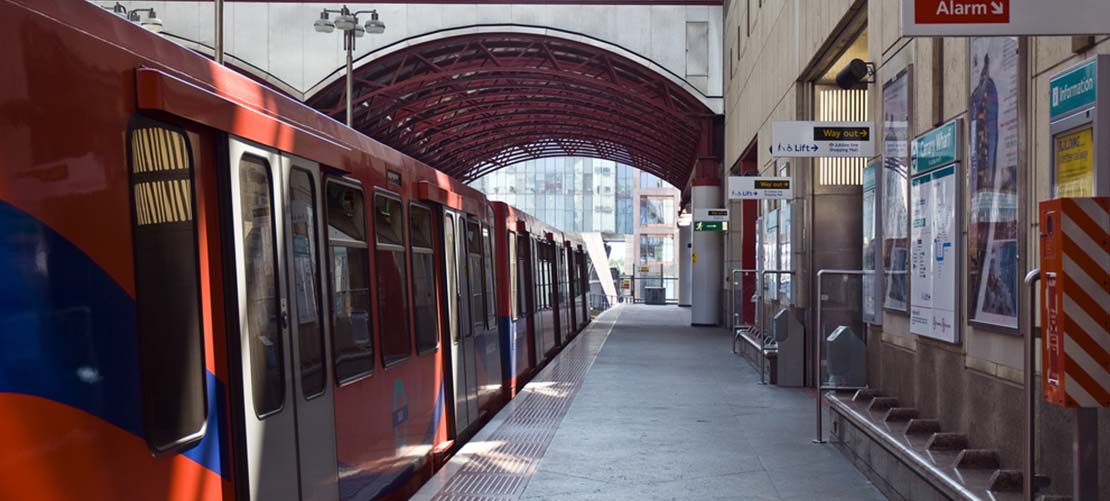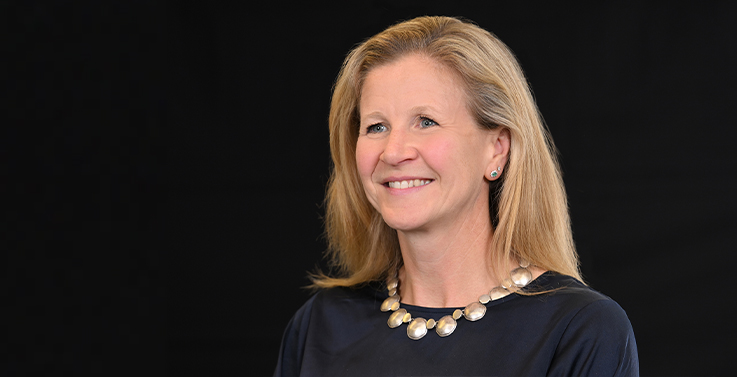Top table dinner: third party funding and financing in the railway industry - 10 things we learned

Wednesday 21 November 2018 saw the latest in the series of "top table" dinners jointly hosted by Stephenson Harwood and Atkins. The topic for this dinner was "Catalyst for change: Third party and private sector funding and financing in the railway industry". We were lucky to be joined by Toufic Machnouk, who was our keynote speaker. Toufic is the Programme Director responsible for digital railway transformation in the Network Rail route executive team for London North Eastern and East Midlands. We were interested in the comparison he made between the rail industry and space travel – and the ongoing innovation in this latter area by companies such as SpaceX.
To those of you who joined us, thank you. We very much enjoyed the interesting and engaging discussion around the tables – and we welcome your contribution. If you were not able to join us this time, we hope you will be able to do so at a future dinner. We have set out below 10 of the key themes which emerged from the discussions.
- Network Rail wants third party investment: Network Rail wants to get "back to basics": delivering a railway which works for the customer. Steps have already been taken to give greater autonomy to the routes and the next step is to unlock much-needed investment in the railway. There is now a need to think differently – and big organisations are unlikely to deliver that. The industry should draw on the ideas of smaller companies or start-ups for inspiration to overcome the hurdles that currently seem to exist. We should not always be focussing on the balance sheet implications of particular ideas but should be looking to drive forward the ideas themselves, bringing together expertise in a partnership style of working. Network Rail wants third party investment in the industry and it wants ideas about how best to facilitate that. There is no conductor within government who is leading the way on this – the industry needs to take charge and push this forward. We should not "WIBBI" (or "wouldn't it be better if…?") and come forward with solutions.
- Third parties want to invest: There was plenty of appetite for investing in the industry around the tables. The resounding message was "we want to invest but you need to help us to help you". There is no issue with money and opportunities being available, but the outcomes need to be clearer and risks need to sit where they can best be managed. Everyone involved needs to be happy if the intention is to get the right deal and the much-needed investment.
- What prevents alignment?: One question asked was "how do you measure the success of a scheme?". In order to work out what success looks like – and how the benefits may then be shared – you need to be clear about what the outcome of the scheme is, what the baseline output is and how outperformance can be assessed. A discussion can then take place about how best to align incentives, where risks properly lie and the balance between the short term and the longer term interests that parties may have. To date, there has perhaps been a tendency to try and shift too many risks to the private sector (who may be the least able to mitigate them) and goals have a tendency to move – meaning "success" can look different as the scheme progresses. If risks are to be transferred to the private sector, there needs to be a suitably long period to make a return on that investment. This includes investments being made under a franchise agreement, where the feeling was that the current "residual value mechanism" does not actually facilitate investment spanning successive franchises.
- "Market led proposals" have not been welcomed: There was a lot of debate around the government's approach to "market led proposals" and whether this really helped facilitate private sector funding and financing in the industry. The overwhelming message was no, it does not. Criticisms included having no certainty at the outset about whether the scheme would be progressed (involving potentially huge outlays with no certainty of a return) and the possibility of innovative ideas being "stolen" and passed to competitors as part of the procurement process. Greater clarity over the actual process, the pipeline and how decisions will actually be made was also encouraged.
- What mechanisms are out there already?: The key one which people were familiar with was the "section 106" agreement, whereby the developer provides certain undertakings as a condition of obtaining planning permissions. Capturing increases in land value was seen to be a way forward – as those that benefit from the scheme contribute to its cost. However, this often needs local buy-in or levies, which local authorities, locally elected, may not be keen to impose on their electorates. Finally, the "investment recovery charge" mechanism may also be available for certain schemes, whereby a supplement to the track access charge is paid by train operators to recover the capital cost of particular investments in the railway.
- Where should risks properly sit?: Fair and appropriate risk allocation is integral to the success of a particular scheme. For a new station, it may be appropriate for the private sector to take delivery risk of that station – but revenue risk on usage of that station is not one necessarily within the reasonable control of the private sector – or risks relating to the wider surrounding area. The station developer may not be able to control the nature of the surrounding development (for example, whether new housing is mansions or heavy density flats) which will have a significant impact on rail passenger patronage. Ultimately, special purpose companies tend to be lightly capitalised and are not in a position to take some of the risks that the public sector may prefer to transfer.
- Competing demands for contributions: Any new development will have competing demands for contributions from the developer – it is not just the railway vying for money. For example, there may be the need for new schools and community facilities, enhancements to sewerage or utility supplies and contributions to road improvements. This may not be the "magic money tree" that some people may hope – yes, developers should contribute to beneficial railway schemes, but funding from other sources will also be needed.
- Network Rail and the DfT – do they need to change?: Put simply, yes. Network Rail will always be part of the picture as ultimately it may need to act as system operator and/or infrastructure manager of the investment. Whilst there have been warm words, behaviours have not been as quick to move and there is a perception that Network Rail will try and find barriers, rather than solutions. Similarly, the DfT needs to decide what role it will take and be very clear about what needs to be achieved to allow private investment to move forward on a sustainable footing. There are also tensions to reconcile between central and local government empowerment, involvement and funding. If there is to be a single guiding mind for the industry, how are the views of all stakeholders properly taken into account? One of the successes of Crossrail is considered to be the "one guiding mind" for the project – a success which should not be lost as a result of devolution, particularly where there is no local political appetite for a particular scheme.
- Financiers may take more risks than you might expect: An example was given of a scheme where a financier did take planning risk – not a risk you would traditionally expect the financier to take. Whilst this would not always be appropriate and this would need to be balanced against potential returns, the importance of an ongoing dialogue was emphasised: if you do not ask the financier whether they are prepared to accept a risk, you will never know the answer. One of the important messages is that any structure or scheme needs to be replicable. It needs to be able to be rolled out to other schemes, rather than having to go back to the drawing board each time.
- So what is the way forward?: Unfortunately, the room was not able to offer a perfect way forward. The feeling was that the investment structure was not the big issue: aligning incentives and encouraging the right behaviours was. One suggestion was for the DfT to take a step back, whilst still offering strategic direction and a dedicated team as a point of contact. Network Rail's role should be to enable – rather than deliver – investment. The private sector should take delivery risk but not economic or planning risk. Ultimately, however, the devil will be in the detail.



